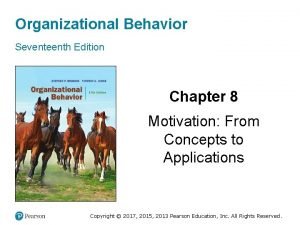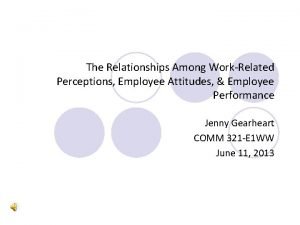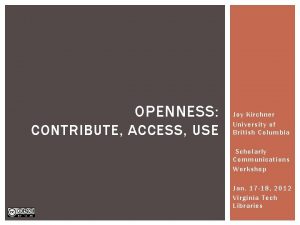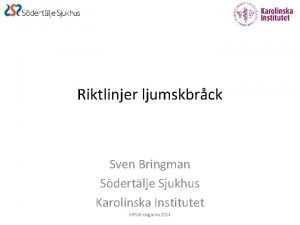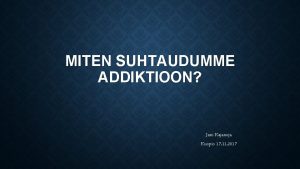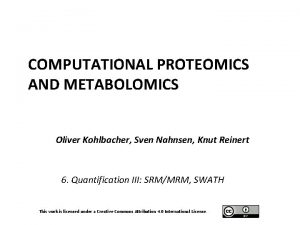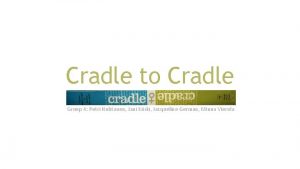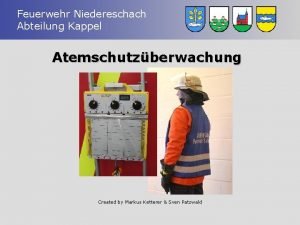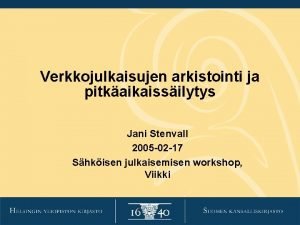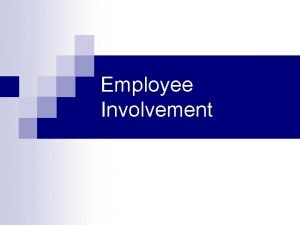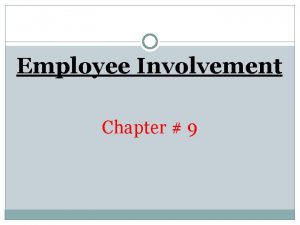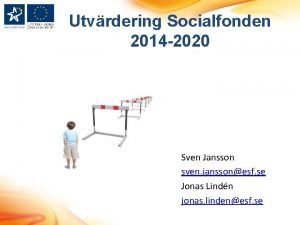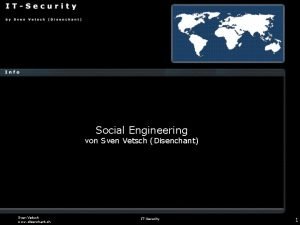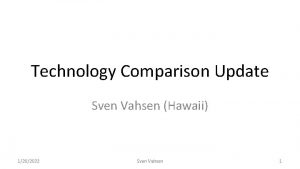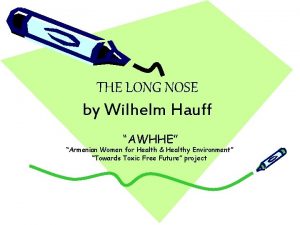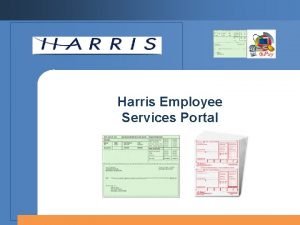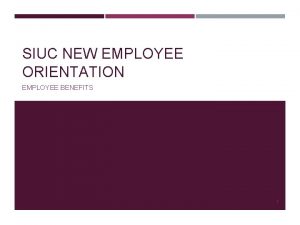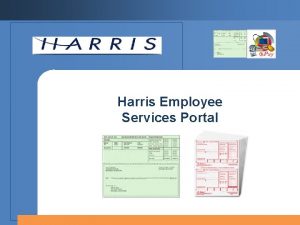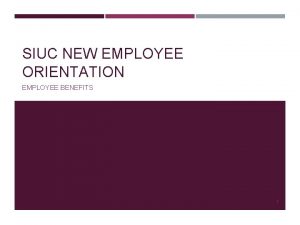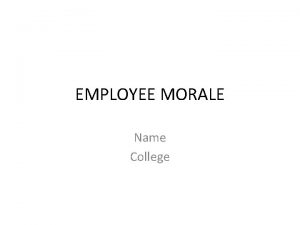Stefan Kirchner Sven Hauff Employee involvement Are there





















- Slides: 21

Stefan Kirchner & Sven Hauff Employee involvement: Are. there different forms and do they matter?

Employee involvement – Desirable or undesirable effects > Position 1. . . generally positive effects – > "An important claim in the literature. . . employee involvement. . . is beneficial for both economic performance and employee well-being. " (Gallie/Zhou 2013: 46; …) Position 2. . . negative or ambiguous effects – “intensification and management by stress” (Parker and Slaughter 1995; Rinehart et al. 1997) – “mixed results” (Godard 2004, 2010; Macky and Boxall 2008; Ramsay et al. 2000; Wood et al 2012) 2

Employee involvement – One dimensions or many? > General applications = broadly defined concept > Differentiation of different dimensions (e. g. Gallie/Zhou 2013) – – – > Task discretion Organizational participation Strategic participation … role of responsibility for involvement acknowledge, however no specific measures or measurement constructs 3

Hypotheses > Hypothesis 1: Employee involvement exerts positive effects on working conditions and well-being. > Hypothesis 2: Employee involvement exerts negative effects on working conditions and well-being. > Hypothesis 3: Different dimensions of employee involvement exert counteracting effects on working conditions and wellbeing. 4

Data > EWCS 2010: EU 27 countries, only empoyees, only from manufacturing or service industry (N: 17581) > Measures: employee involvement, working conditions, wellbeing > Control variables: sex; age; weekly working time; job tenure; supervision function; physical strain; contract types; educational level; size of the worksite; ISCO 88; NACE; country dummies; 5

Measuring model Working conditions Work strain Meaningfulness of work Employee involvement Well-being General well-being, health status Health problems: physical / psychological 1. Different forms of employee involvement? 2. Different effects on working conditions and well-being? 6

Analysis > Factoranalysis predicted factor scores > Basic regression of factor variables on working conditions and well-being variables > Meditation regression of factor variables on well-being variables (working conditions as independent variables included) 7

EMPIRICAL RESULTS 8

Factor analysis > Selection of theoretically related items in the EWCS > 1. Step: Three factors – Three dimensions of employee involvement - Task discretion - Process responsibility - Organizational participation > (good factor solution) (sufficient factor solution) (good factor solution) 2. Step: One meta-factor of employee involvement

Discussion I > Factor analysis: three different employee involvement dimensions – Task discretion and organizational participation confirmed – Process responsibility newly identified, picture completed > Regression results: counteracting effects – Hypothesis 1 and Hypothesis 2 rejected – Hypothesis 3 supported : negative and positive effects present that are due to different dimensions of employee involvement 10

Results: meta-factor 11

Regression analysis: working conditions 12

Discussion II > Work strain: – Mitigated by task discretion and organizational participation – Increased by process responsibility > Meaningfulness of work – Generally increased by all employee involvement dimensions 13

Discussion III > Well-Being (satisfaction, health problems) – Task discretion only positive effect on satisfaction – Process responsibility decreases well-being – Organizational participation increases well-being > Well-Being – moderation models (working conditions included) – Effects generally mitigated = partial moderation – Systematic relation between involvement and working conditions 14

Regression analysis: well-being 15

Regression analysis: well-being basic and mediation models 16

Conclusions and implications > “Participation comes with the burdens of responsibility” – Responsibility = important dimension + negative effects > Limited reach of task discretion (vs. org. participation) – Fewer aspects influenced (working conditions + well-being) > Counteracting effects bridge the negative-positive rupture in the literature (hpwp vs. management by stress) – Work design: leveling the relation of responsibility and participation 17

THANK YOU FOR YOUR ATTENTION. . . 18

BACKUP - WHAT IS NEXT … 19

Employment regimes – EU 27: country differences

EU 15 – country differences: DK! … UK? … DE?
 Sven hauff
Sven hauff Antigentest åre
Antigentest åre How can employee involvement measures motivate employees
How can employee involvement measures motivate employees Claudia hauff
Claudia hauff Employee attitudes and employee performance
Employee attitudes and employee performance Doug kirchner
Doug kirchner Ernst ludwig kirchner zelfportret als soldaat
Ernst ludwig kirchner zelfportret als soldaat Ryan kirchner
Ryan kirchner Thibaud antignac
Thibaud antignac Casey kirchner
Casey kirchner Autoritratto da soldato di kirchner
Autoritratto da soldato di kirchner Joy kirchner
Joy kirchner Parietene
Parietene Sven jani
Sven jani Sven nahnsen
Sven nahnsen Sven kepes
Sven kepes Sven jani
Sven jani Sven nyholm
Sven nyholm Feuerwehr niedereschach
Feuerwehr niedereschach Traueranzeige sven schulz greifswald
Traueranzeige sven schulz greifswald Sven jani
Sven jani Sven laur
Sven laur


